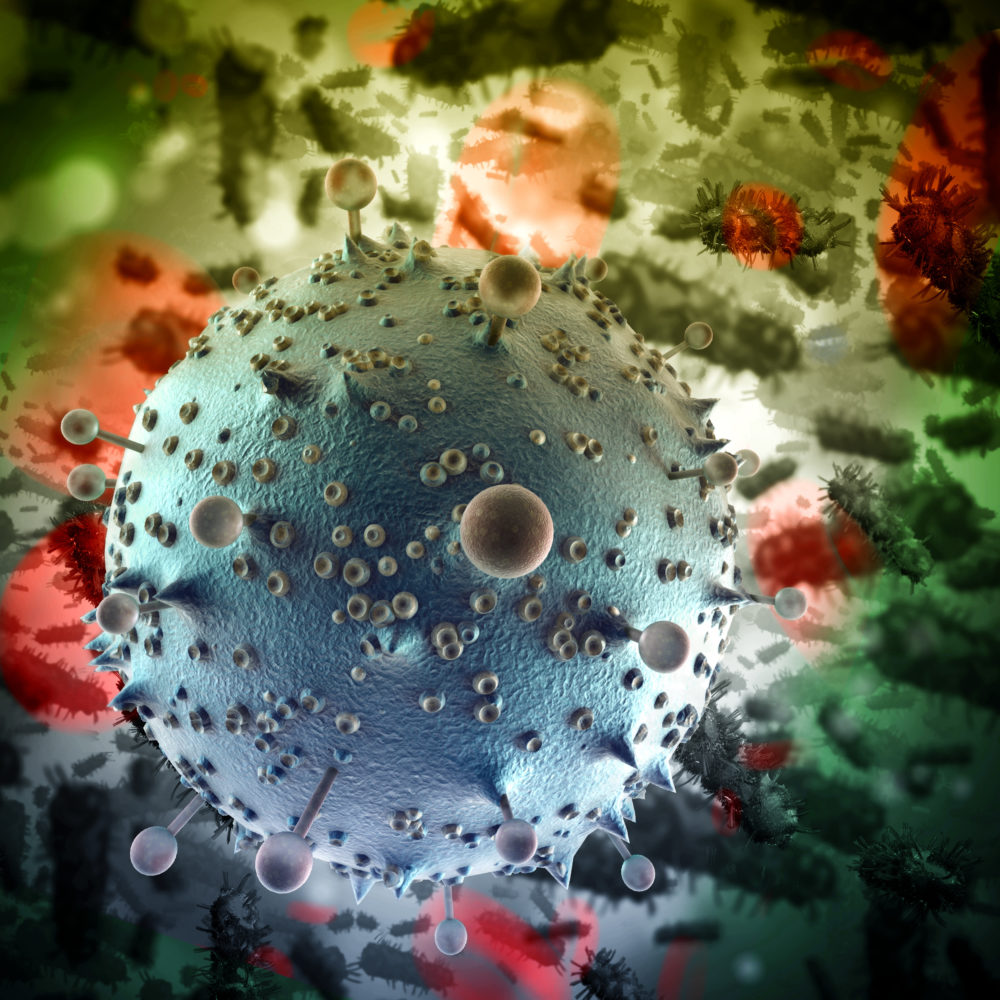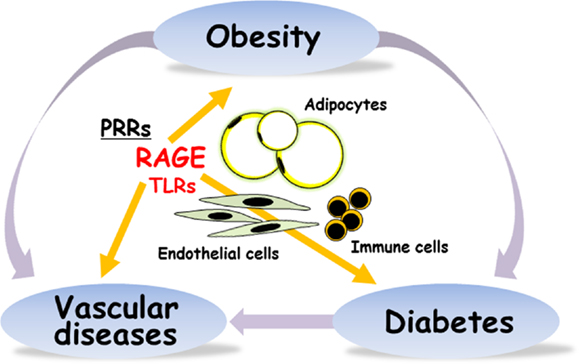Back in the day of being a bench scientist studying how cells work, how a single fertilized cell eventually becomes skin, eye, muscle, adipose… how our bodies routinely detect and destroy improperly formed cells, and even clean out those that die when their time is up to make way for new, healthy tissue; back then never a day went by without a remarkable new finding at a deeply biochemical/molecular level.
Sadly, so much of that fascinating work can only be understood by those of us who speak the language of science and molecular biology. Yet, their are times when an important find really needs to become mainstream. Here goes…
The main character in this story is…
AGEs (Advanced Glycation End products) are proteins that have been permanently changed when sugars, especially glucose and fructose, chemically bind to those proteins.
In plain English, whenever there is sugar around, some of the sugar molecules will irreversibly, chemically bind (glycation) to any proteins around. If the glucose, fructose, or other sugars bind to a protein it chemically alters them—alters how they work.
A number of things can cause this to happen:
- Blood sugar elevations
- Sugars added to foods—especially when cooked (think bacon or ham cured in sugar, sausage… then cooked, or any fast food where sugar is added to make up for the otherwise horrible taste)
- Dehydration: even a non-sugary diet can be high sugar if you are not sufficiently hydrated; juices and juicing concentrate sugars
So? Why pick on sugar?
A LOT of reasons. Proteins are a building block for many, many parts of every cell in our body—muscle, skin, blood vessel walls, blood cells… certain hormones… digestive enzymes…
Having a big molecule of sugar, and it’s often many of them, stuck to the protein changes how well it works—or if it works at all.
Let’s take elastin—a stretchy, bendable, protein incorporated into joint and skin tissue to keep them bending and to help them snap back when they are stretched—every time you play softball, go fishing, laugh… squint… your joints and skin stretch and snap back. Elastin makes this possible.
When the normally-stretchy elastin proteins are crosslinked with sugars it causes the joints or skin to not stretch very well and not bounce back after being stretched. Wrinkles, joint aches…
Sugar: All the RAGE
 Let’s back up for a minute. One of the ways our cells respond to signals from your body—whether responding to hormones or detecting viruses or… is they have little antennae on their cell surface. Just like in the old days before cable, in the 60’s and 70’s when every house had a TV antennae to get the daily broadcast, the transmission for a show would be received by the antennae, follow a wire to the TV and the family would sit down and have an evening together. Picture your cell surface with separate antennaes for every station—it isn’t much different.
Let’s back up for a minute. One of the ways our cells respond to signals from your body—whether responding to hormones or detecting viruses or… is they have little antennae on their cell surface. Just like in the old days before cable, in the 60’s and 70’s when every house had a TV antennae to get the daily broadcast, the transmission for a show would be received by the antennae, follow a wire to the TV and the family would sit down and have an evening together. Picture your cell surface with separate antennaes for every station—it isn’t much different.
Every cell has networks of receptors distributed across their surface to receive chemical signals. The receptors are made of proteins and they are designed to receive other molecules like hormones or other proteins that fit perfectly inside of it. When the right protein binds to that receptor, it sends a signal that tells the cell to do something.
For example, your thyroid makes thyroid hormone. Molecules of hormone spread throughout the body in your blood. Receptors on every cell surface pick up this chemical hormone. When the hormone is there, on the receptor, it tells the cell to do something—in the case of thyroid hormone, it tells each cell how fast to do what it is suppose to do—whether to digest food quickly or slowly, sweat a little or a lot, etc.
Because both the receptor and the hormone can be made from protein, having a lot of sugar bound to it is like rust on your antennae or a dirty signal: poor quality reception.
What an AGE bound to a RAGE says to a cell

from Yamamoto and Yamamoto, 2013
It turns out that cells use the same mechanism—protein receptors on their surface—to detect AGEs themselves. If the sugars bound to proteins in the blood or on blood cells are AGEs, then RAGE stands for Receptor for AGE (Advanced Glycation End products).
When an AGE binds to its receptor (RAGE), it also tells the cell to do something.
All normal cells have some RAGE. But when sugar levels are chronically high, like in sugar junkies, pre-diabetes and diabetes, cells start making more RAGE, more receptors to respond to sugar AGEs.
This is like the TV station having total control over the volume of your show. No more turning down commercials you don’t like—the more signal the station sends out, the more antennas appear all over to receive it, the higher the volume, and you can’t ignore the message.
When RAGE is activated because it detects high levels of proteins with sugars stuck to them—and that happened because blood sugar levels went high from dietary violations—it tells the cell to start the growth and division process. The message is grow and divide.
Think about it. We eat high-carb or high-sugar, the sugar binds to proteins in the meal and/or in our blood and become AGEs, those AGEs are detected by cell receptors (RAGEs) and that tells the cell to start dividing to make more cells.
Wow, sugar might start the cancer process??
For decades we’ve known that cancer cells cannot burn fat as a fuel source. Cancer cells rely on sugar while normal, healthy cells can use fat for energy and will do so as long as blood sugar does not go high.
We’ve observed for decades that sugar stimulates cancer growth. The recent discovery of AGE/RAGE exposes a key step in the disease progress of inflammation, obesity, and tumor growth and metastasis.
Several studies have been published on the relationship between RAGE expression and cancer. RAGE stimulates cancer growth in renal cell carcinoma. Having elevated RAGE receptors is also associated with the invasiveness of colon and gastric cancer. And recently, the AGE/RAGE relationship was shown to stimulate acute myeloid leukemia (AML).
Beyond cancer, elevated blood sugar that chemically links to blood proteins stimulates RAGE receptors of cells on blood vessel walls. This is thought to start the inflammatory cascade including blood vessel lesions that have to be repaired (which starts a cholesterol plaque and scab) and ultimately artery and/or vein blockage and heart disease, or stroke.
How to avoid premature aging and cancer
While the official score assigns tobacco with 33 percent of all cancers, next in line are excess obesity at 11 percent, “unknown” is responsible for 10 percent, and “diet” is attributed with 5 percent. Of course excess weight and obesity are 80 percent what you eat. Even if we can’t explain the unknown, surely preventing 1 in 8 cancer diagnoses is worth knowing about.
The AGE/RAGE connection just might move some of those percents into a new category: sugar.
Obviously we want to make sure we don’t ever intentionally cook or smoke meat with sugars—that’s just asking for it. Read the packages; almost all bacon, ham, sausages, smoked salmon are cured in a high-sugar brine and say so right on the label. Those sugar-linked proteins are just no longer available as genuine building blocks but they do get into your blood stream.
If we want to prevent cancer and other problems we have to reduce our sugar intake. Most of us eat about 20 teaspoons of added sugar every day without realizing it. Sugars get named all manner of names by commercial food companies hoping to disguise them as healthy or natural or… something they are not.
Turbinado sugar, organic cane sugar, agave, fruit juice sweetened, corn sugar… these are all just attempts at pretending to be less bad when the truth is all sugars are created equally bad as far as forming AGE’s are concerned.
Beyond the smoked meats and deserts; breads, pasta, cereals, “protein bars” and most condiments like mayonnaise and catsup deserve some serious inspection not just for ingredients but with an aim to reducing how often you eat them—if at all. Some brands (and recipes) are healthier than others, but for most of us we’re eating too much sugar and certain foods that turn into sugar (carbohydrates).
Some of us realize we eat this much sugar or think it is simply part of life, expected after sports games, at half-time, during emotional crises, whatever… Wherever you stand, your health is up to you. Consider how many “treats” and “rewards” are wise in light of emerging data on AGE/RAGE.
I sure like having you around and cancer is not an easy disease to treat once it takes hold. Let me know how I can help you kick the sugar habit.
References
Brownlee M, Cerami A and Vlassara H: Advanced glycosylation end products in tissue and the biochemical basis of diabetic complications. N Engl J Med 318: 1315-1321, 1988.
Kim JY, Park HK, Yoon JS, et al. Advanced glycation end product (AGE)-induced proliferation of HEL cells via receptor for AGE-related signal pathways. Int J Oncology 33:493-501, 2008
Lander HM, Tauras JM, Ogiste JS, Hori O, Moss RA and Schmidt AM: Activation of the receptor for advanced glycation end products triggers a p21(ras)-dependent mitogen-activated protein kinase pathway regulated by oxidant stress. J Biol Chem 272:17810-17814, 1997.
Li YM, Mitsuhashi T, Wojciechowicz D, et al: Molecular identity and cellular distribution of advanced glycation endproduct receptors: relationship of p60 to OST-48 and p90 to 80K-H membrane proteins. Proc Natl Acad Sci USA 93: 11047-11052, 1996
Schmidt AM, Hasu M, Popov D, et al: Receptor for advanced glycation end products (AGEs) has a central role in vessel wall interactions and gene activation in response to circulating AGE proteins. Proc Natl Acad Sci USA 91: 8807-8811, 1994.
Yamamoto Y and Yamamoto H, RAGE-mediated inflammation, type 2 diabetes, and diabetic vascular complication. Front. Endocrinol., 21 August 2013 | http://dx.doi.org/10.3389/fendo.2013.00105







Thanks great information.
Hi Jacoba! When I wrote this I worried it was too complicated. So I am glad it was helpful. Thank you for the feedback.
Yours in Health! –Marie